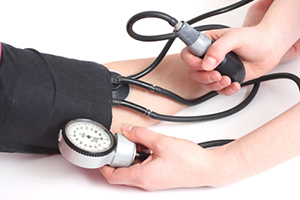 Imagine waking up every day and not having to worry about pushing your blood pressure down to 120.
Imagine waking up every day and not having to worry about pushing your blood pressure down to 120.
Or down to 125.
Or – get this – even down to 130.
Why? Because a fresh-out-of-the-oven piece of research suggests that once you’ve lowered your blood pressure to a certain point (and it’s not 120!), there’s no need to drop it further.
When physicians deal with people suffering from high blood pressure, the advice always is to get the blood pressure lower and lower and never be satisfied until it touches at least 120. A study conducted in the Public Health Sciences department in Wake Forest Baptist Medical Center proves that it’s not always the best idea.
The study focused on 4500 people for 21 years. The researchers followed them up every 3 years to measure their systolic blood pressure. The blood pressure readings varied from below 120 to greater than 140.
By the end of the study period, about 1622 cases of heart attack, heart failure and stroke were recorded. People with blood pressure higher than 140 had a 46 percent higher risk of developing heart problems than those with readings below 120.
But interestingly, there was no difference in the heart disease risk among people with readings ranging from 120 to 139 mm Hg compared to those with readings below 120. The results were concluded after taking into account different lifestyle factors like alcohol consumption, smoking, cholesterol levels, gender, age and body mass index.
As concluded by the researchers, after bringing down the blood pressure readings below 140, it didn’t seem necessary to go all the way to lower it to 120 and below, considering that it did not seem to offer any additional benefits.
Since this study was very small, it’s still a good idea to keep your blood pressure under control. But don’t worry too much and don’t overmedicate.
If you have a moderately high blood pressure reading, a good diet and exercises are all that you may need to restore your heart health.

 Overcoming IBD
Overcoming IBD Multiple Sclerosis
Multiple Sclerosis Banishing Bronchitis
Banishing Bronchitis Gum Disease Gone
Gum Disease Gone Overcoming Onychomycosis
Overcoming Onychomycosis Neuropathy No More
Neuropathy No More The Prostate Protocol
The Prostate Protocol Brain Booster
Brain Booster
 Ironbound
Ironbound
 Solution for Shingles
Solution for Shingles
 The Bone Density Solution
The Bone Density Solution
 The Ultimate Healing Protocol
The Ultimate Healing Protocol
 The Parkinson's Protocol
The Parkinson's Protocol
 The Chronic Kidney Disease Solution
The Chronic Kidney Disease Solution
 Overthrowing Anxiety
Overthrowing Anxiety The Fatty Liver Solution
The Fatty Liver Solution The Hypothyroidism Solution
The Hypothyroidism Solution
 The End of Gout
The End of Gout The Blood Pressure Program
The Blood Pressure Program
 The Oxigized Cholesterol Strategy
The Oxigized Cholesterol Strategy
 Stop Snoring And Sleep Apnea Program
Stop Snoring And Sleep Apnea Program
 The Arthritis Strategy
The Arthritis Strategy The Vertigo & Dizziness Program
The Vertigo & Dizziness Program The 3-Step Diabetes Strategy
The 3-Step Diabetes Strategy Hemorrhoids Healing Protocol
Hemorrhoids Healing Protocol The Erectile Dysfunction Master
The Erectile Dysfunction Master Weight Loss Breeze
Weight Loss Breeze The IBS Program
The IBS Program The Insomnia Program
The Insomnia Program The Migraine and Headache Program
The Migraine and Headache Program The Neck Pain Solution
The Neck Pain Solution The Menopause Solution
The Menopause Solution The Ejaculation Master
The Ejaculation Master The TMJ Solution
The TMJ Solution The Acid Reflux Solution
The Acid Reflux Solution The Fibromyalgia Solution
The Fibromyalgia Solution The Psoriasis Strategy
The Psoriasis Strategy
I don’t think there is any fixed number for everyone. Maybe for some people it’s natural to have higher blood pressure while for others it’s natural to have lower. Just like some people need more exercising than others. Different people crave different foods. We are all different and the pharma often wants to create “one solution fits all” because it’s easier and cheaper for them.
There are also so many side effects of blood pressure medications that it may do more harm to take them than having higher blood pressure. I would say do everything possible to naturally lower your blood pressure and then relax and not over focus on it.
can u do me afavour and rescue me because am bedriden with hbp
I read an article -AMA says people over 60 can have BP up to 150/90 as normal. Has anyone else seen that information or checked it out?
good info i will try it out and know how goo it is
In David Brownstein M.D. news letter Natural Way to Health dated June 2010 he lists acceptable levels of blood pressure for men and women as they age and the levels increase to 184 mmHg systolic for men 65 to 74 years old. Big Pharma would have people trying to lower their blood pressure to 120 mmHg no matter how old they are to keep the profits from the sale of their chemical drugs flowing into their coffers.
I just got a big surprise. I have high bloodpressure and thought it I take my meds and keep it low I am ok. just found out from my Dr. that you can have low pressure and still have a heart attack. so why are we taking all this meds????????????????????????////
I think they lowered it to sell more BP medicine.
I have benefitted from your write up, I shall keep a date with Goodman, tnx.
Always a useful reading.
Senior Citizens needn’t worry about bringing the BP below 140/85. Just keep an active lifestyle with walk, 4 times a week. Best to bring down your weight by 10%, if your BMI is above 28.
I am NOT a Doctor – just a well meaning Senior Citizen.
This article was very helpful! I monitor my b/p at home and it's always lower than it is when it's taken in the Dr's office but never over 140. Thanks for the information.